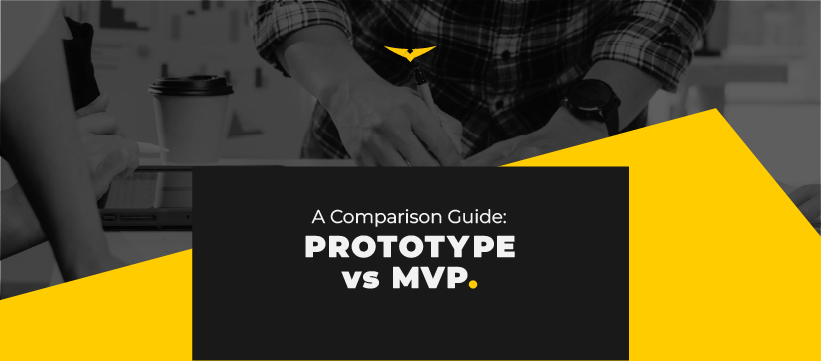The terms Prototype and Minimum Viable Product (MVP) are often tossed around. While both serve crucial roles in creating successful products, it’s important to understand their key differences. In this comparison guide, we’ll show what a Prototype and an MVP entail, their features and benefits, and provide real-world examples. So, let’s dive in and unlock the mysteries of Prototype and MVP!
What is a Prototype?
A Prototype is an early version or a mock-up of a product that allows designers, stakeholders, and developers to visualize and test their ideas. It’s a tangible representation of the concept, highlighting the core functionalities and user interactions. Think of it as a rough sketch before the masterpiece is born.
Prototype Features:
- Visual representation: Prototypes are designed to visually represent the product idea, showcasing its user interface (UI) and user experience (UX) aspects.
- Interactivity: They offer basic interactivity, allowing users to navigate the screens, interact with certain elements, and gain a feel for the product’s functionality.
- Limited functionality: Prototypes focus on demonstrating the key features and user flows without incorporating the full set of functionalities.
- Low fidelity: They can be low-fidelity, meaning they are often simple and rough, emphasizing the concept rather than the final design.
Prototype Benefits:
- Feedback and validation: Prototypes enable early feedback from stakeholders, potential users, and team members, validating assumptions and refining the product idea.
- Cost and time efficiency: Developing a prototype is usually quicker and cheaper than building a full-fledged product, allowing rapid iterations and improvements.
- User-centric design: Prototypes facilitate user testing, helping designers identify usability issues and improve the UX before investing significant resources.
- Communication and collaboration: Prototypes act as a common language among stakeholders, bridging the gap between designers, developers, and business stakeholders.
Examples of Prototype:
- Paper mock-ups: Hand-drawn or printed sketches that simulate screens and interactions.
- Wireframes: Simple, black-and-white layouts depicting the structure and navigation of the product.
- Clickable prototypes: Interactive digital representations that emulate user flows and transitions using tools like InVision, Adobe XD, or Figma.
What is an MVP?
A Minimum Viable Product (MVP) is a functional version of a product that includes only the core features required to address the primary problem or need of the target audience. It’s a starting point for iterative development, allowing businesses to gather real-world feedback and validate their assumptions.
MVP Features:
- Core functionality: An MVP includes essential features that solve the primary problem or provide value to the users.
- Usable and functional: It goes beyond a prototype by offering a working product with stability and reliability.
- Iterative development: MVPs are designed for continuous improvement, incorporating user feedback and refining features based on usage data.
- Minimalistic design: While focusing on functionality, the design can be more refined than a prototype, providing a better user experience.
MVP Benefits:
- Market validation: MVPs enable businesses to test their product in the market, gather real user feedback, and validate its viability before investing significant resources.
- Early revenue generation: By launching an MVP, businesses can generate revenue earlier, even with a limited feature set, which helps fund further development.
- Agile development: MVPs promote an iterative and incremental development approach, allowing for faster iterations and faster response to user needs.
- Risk mitigation: By launching an MVP, businesses can identify and reduce risks early on, reducing the chances of investing in a product that doesn’t resonate with the market.
Examples of MVP:
- Dropbox: The initial version of Dropbox focused solely on file syncing, allowing users to access their files from multiple devices.
- Airbnb: In its MVP phase, it started with a basic website allowing people to rent their extra space or find affordable accommodations.
- Instagram: The early version of Instagram centered around sharing photos with filters and basic social networking functionalities.
Conclusion
Prototypes and MVPs serve distinct purposes in the product development journey. Prototypes provide a visual and interactive representation of a product idea, facilitating feedback and validating assumptions. On the other hand, MVPs are functional products with essential features, enabling market validation and iterative development. By understanding these differences, businesses can make informed decisions and leverage Prototypes and MVPs to create successful and user-centric products.
Remember, whether you’re in the early stages of ideation or ready to launch, Prototypes and MVPs can be your steppingstones toward product excellence and customer satisfaction.

